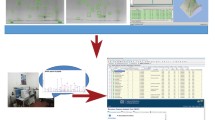Abstract
Mammalian meat allergy can develop after tick bites that introduce the allergen galactose-α-1,3-galacotose, which is also found in non-primate mammalian meat. It is characterized by a delayed onset allergic reaction that can result in dermatological, gastrointestinal and/or anaphylactic symptoms. The condition is managed by avoiding the allergen (i.e. by abstaining from mammalian meat consumption) and further sensitization via tick bites; pharmacological options may be of use for symptom management.
Similar content being viewed by others
References
Sharma SR, Karim S. Tick saliva and the alpha-gal syndrome: finding a needle in a haystack. Front Cell Infect Microbiol. 2021;11: 680264.
Shah R, Schwartz RA. Meat allergy: a ticking time bomb. Am J Clin Dermatol. 2022;23(4):515–21.
van Nunen S. Tick-induced allergies: mammalian meat allergy, tick anaphylaxis and their significance. Asia Pac Allergy. 2015;5(1):3–16.
Commins SP. Carbohydrates as allergens. Curr Allergy Asthma Rep. 2014;15(1):492.
Commins SP. Diagnosis and management of alpha-gal syndrome: lessons from 2,500 patients. Expert Rev Clin Immunol. 2020;16(7):667–77.
Platts-Mills TAE, Li RC, Keshavarz B, et al. Diagnosis and management of patients with the α-gal syndrome. J Allergy Clin Immunol Pract. 2020;8(1):15–23.
Hashizume H, Fujiyama T, Umayahara T, et al. Repeated Amblyomma testudinarium tick bites are associated with increased galactose-alpha-1,3-galactose carbohydrate IgE antibody levels: a retrospective cohort study in a single institution. J Am Acad Dermatol. 2018;78(6):1135-41 e3.
Raghavan RK, Peterson AT, Cobos ME, et al. Current and future distribution of the Lone star tick, Amblyomma americanum (L.) (Acari: Ixodidae) in North America. PLoS ONE. 2019;14(1): e0209082.
Hamsten C, Tran TAT, Starkhammar M, et al. Red meat allergy in Sweden: association with tick sensitization and B-negative blood groups. J Allergy Clin Immunol. 2013;132(6):1431–4.
van Nunen SA. Tick-induced allergies: mammalian meat allergy and tick anaphylaxis. Med J Aust. 2018;208(7):316–21.
Lee CJ, McGill SK. Food allergies and alpha-gal syndrome for the gastroenterologist. Curr Gastroenterol Rep. 2023;25(2):21–30.
Wilson JM, Nguyen AT, Schuyler AJ, et al. IgE to the mammalian oligosaccharide galactose-α-1,3-galactose is associated with increased atheroma volume and plaques with unstable characteristics: brief report. Arterioscler Thromb Vasc Biol. 2018;38.
Mullins RJ, James H, Platts-Mills TA, et al. Relationship between red meat allergy and sensitization to gelatin and galactose-alpha-1,3-galactose. J Allergy Clin Immunol. 2012;129(5):1334-42 e1.
Chung CH, Mirakhur B, Chan E, et al. Cetuximab-induced anaphylaxis and IgE specific for galactose-alpha-1,3-galactose. N Engl J Med. 2008;358(11):1109–17.
Hawkins RB, Frischtak HL, Kron IL, et al. Premature bioprosthetic aortic valve degeneration associated with allergy to galactose-alpha-1,3-galactose. J Card Surg. 2016;31(7):446–8.
McGregor C, Byrne G, Rahmani B, et al. Physical equivalency of wild type and galactose alpha 1,3 galactose free porcine pericardium; a new source material for bioprosthetic heart valves. Acta Biomater. 2016;41:204–9.
Author information
Authors and Affiliations
Corresponding author
Ethics declarations
Funding
The preparation of this review was not supported by any external funding.
Authorship and conflict of interest
S. Fung and S. Hoy are salaried employees of Adis International Ltd/Springer Nature and declare no relevant conflicts of interest. All authors contributed to the review and are responsible for the article content.
Ethics approval, Consent to participate, Consent for publication, Availability of data and material, Code availability
Not applicable.
Rights and permissions
Springer Nature or its licensor (e.g. a society or other partner) holds exclusive rights to this article under a publishing agreement with the author(s) or other rightsholder(s); author self-archiving of the accepted manuscript version of this article is solely governed by the terms of such publishing agreement and applicable law.
About this article
Cite this article
Fung, S., Hoy, S. Manage mammalian meat allergy by avoiding both the allergen and further sensitization. Drugs Ther Perspect 39, 207–211 (2023). https://doi.org/10.1007/s40267-023-01005-0
Accepted:
Published:
Issue Date:
DOI: https://doi.org/10.1007/s40267-023-01005-0




